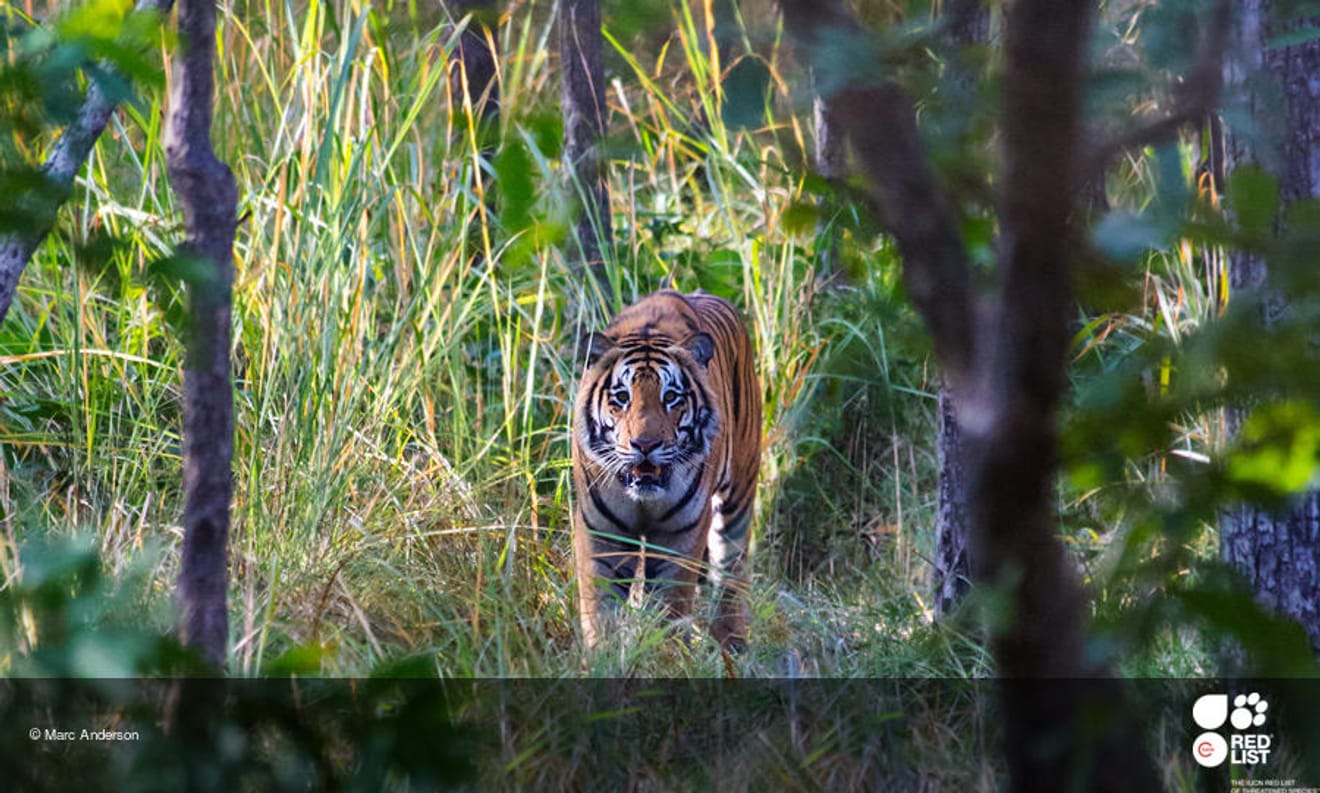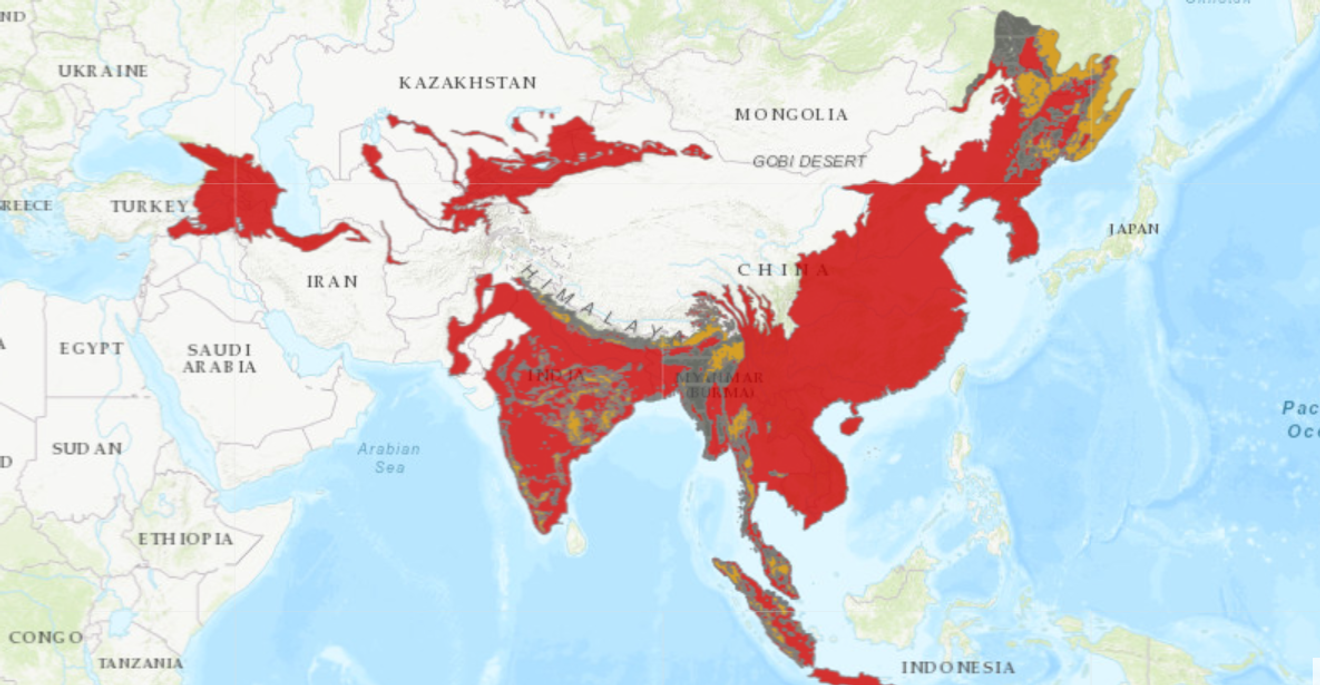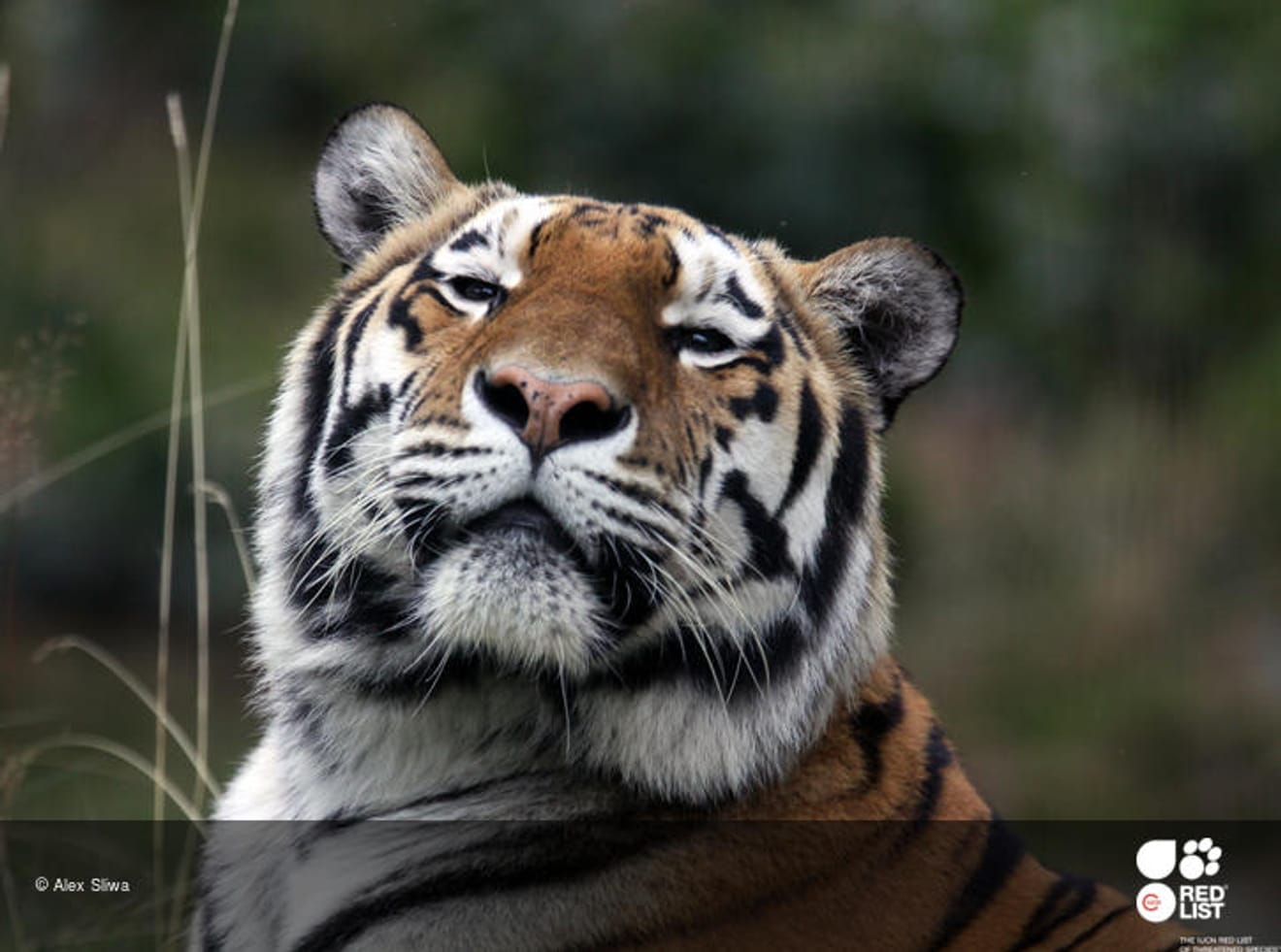Subject
- #Tigers
- #Endangered Status of Tigers
- #Tiger Population Conservation Efforts
- #International Tiger Day
- #Decline in Wild Tiger Population
Created: 2024-01-16
Created: 2024-01-16 16:19
Tigers are a common sight at zoos. Did you know that tigers, a familiar animal to us, are an endangered species?

IUCN
Tigers are listed as Endangered (EN) on the Red List published by the International Union for Conservation of Nature (IUCN). Although tigers are easily encountered at zoos, it might be difficult to consider them as endangered species. However, the wild tiger population is said to be decreasing.

IUCN
The areas marked in red in the image above represent the regions where tigers have become extinct. They are already extinct on the Korean Peninsula, and reports indicate that wild tigers no longer exist in parts of China and India. Currently, it is estimated that around 4,000 tigers inhabit the wild worldwide. Some might ask, ‘If there are 4,000 tigers still alive, why are they endangered?’ However, it is said that around 100,000 tigers inhabited the wild a century ago. In other words, the tiger population has decreased by about 96% in a single century.
Humans have significantly contributed to this drastic decline in the tiger population. In the past, in East Asian regions, tiger bones and skin were used to make medicinal remedies. The indiscriminate hunting of tigers to obtain these medicinal ingredients led to a decrease in their population. In the past, when the concept of endangered species was not prevalent, such overexploitation of animals was common.
Habitat destruction has also significantly impacted the tiger population. Tigers primarily inhabit vast areas such as forests and grasslands, but human development has encroached upon these territories, leading to the loss of their habitats. As a result, tigers have faced significant challenges and suffered considerable losses.

IUCN
Perhaps due to their valiant and powerful appearance, tigers have frequently appeared as characters in famous animations like ‘Winnie the Pooh’ and ‘The Jungle Book’. Have we perhaps focused only on ‘tigers as characters’ rather than ‘real wild tigers’? What efforts are humans making to repay the debt they owe to tigers?
The international community is undertaking various initiatives to protect endangered tigers. In 1973, the International Union for Conservation of Nature (IUCN) established the Convention on International Trade in Endangered Species of Wild Fauna and Flora (CITES). Under this convention, tigers are prohibited from being captured and traded.
Furthermore, in 2010, the World Wide Fund for Nature (WWF) collaborated with the Indian government to launch the ‘TX2’ campaign, aiming to double the global tiger population by 2022, with the slogan ‘Double the Tigers by 2022’. As a result, the tiger population, which was only around 3,200 in 2010, has increased to approximately 4,000 as of 2023.

pixabay
Thanks to the efforts of various organizations dedicated to preserving the tiger population, the number of tigers has increased compared to a decade ago. However, it is still too early to be complacent as a clear upward trend has not yet been established. Although tigers always appear valiant and powerful, they are facing extinction due to human ignorance and greed. Therefore, continued human attention to tigers is essential.
July 29th is celebrated annually as ‘Global Tiger Day’. How about taking a moment this year to show your concern for endangered tigers?
Comments0